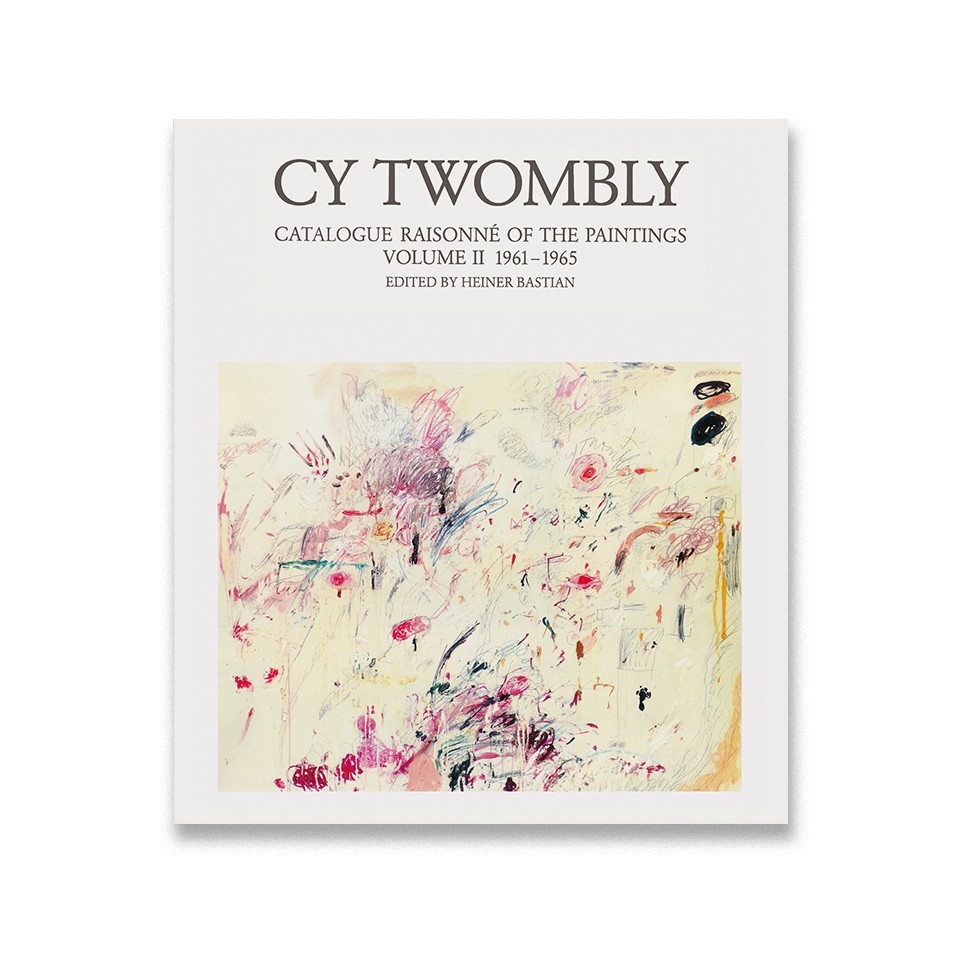Cy Twombly
Catalogue Raisonné of the Paintings
Volume II, 1961–1965
Volume II, 1961–1965

Cy Twombly Catalogue Raisonné of the Paintings Volume II, though tightly focused on the short span of 1961 to 1965, includes major, heavily studied paintings, among them The Italians (1961), Triumph of Galatea (1961), Ferragosto (1961), and Achilles Mourning the Death of Patroclus (1962). In his introductory text, Heiner Bastian addresses Twombly’s intensive engagement with Mediterranean history and mythology, synthesized amidst a fervor of creative activity. Bastian explores major subjects of recurring attention—expressing both Mediterranean “forlornness” (24) and excess—such as Stéphane Mallarmé, Arcadia, Ovid, Venus, Virgil, and so on. As Bastian notes, Twombly’s palette shifted during this period from an alternatingly lush and fervish vibrant palette to austere grayscale works, a departure heralded by Twombly’s infamous Discourses on Commodus (1963). Bastian also offers extended readings of Empire of Flora (1961) and School of Athens (1961).
This volume is of particular importance for researchers with an interest in Twombly’s use and transcription of poetry. John Keats, Virgil, and Homer each have works dedicated to them throughout this period, and works such as Ilium (One Morning Ten Years Later) (1964) presage later monumental cycles such as Fifty Days at Iliam (1978). Themes of mourning, death, and melancholy are also prevalent throughout the body of work collected here, including his Death of Giuliano di Medici (1962), Death of Pompey (1962), Achilles Mourning the Death of Patroclus (1962), The Ides of March (1962), Untitled (Death in Naples) (1963), and Discourses on Commodus (1963).
This central reference text connects to many major works of Twombly scholarship, threading through various strands of scholarship. Those interested in Twombly’s use of poetry and inscriptions should consult Mary Jacobus’s definitive Reading Cy Twombly: Poetry in Paint alongside this volume. Thierry Greub’s Inscriptions is also useful for primary source material and related references. Roland Barthes’s “The Wisdom of Art” (1979), a classic text within the literature, famously takes up The Italians (1961), with a sustained, lyrical address of the role of Twombly’s distinctive idiosyncratic hand. Cy Twombly Gallery: The Menil Collection, Houston, ed. Nicola Del Roscio and Julie Sylvester, includes individual discussions of works such as Ferragosto (1961), and other major exhibition catalogues likewise typically address at least some works from this period—see, e.g., Cycles and Seasons, ed. Nicholas Serota (2008).
(Publication description by Jamie Danis)
Cy Twombly Catalogue Raisonné of the Paintings Volume II 1961–1965. Edited by Heiner Bastian. Munich: Schirmer/Mosel, 1992. Fully illustrated. English/German bilingual edition.